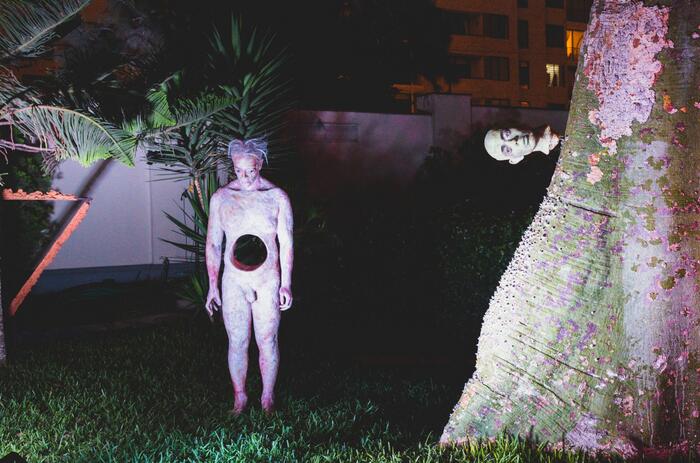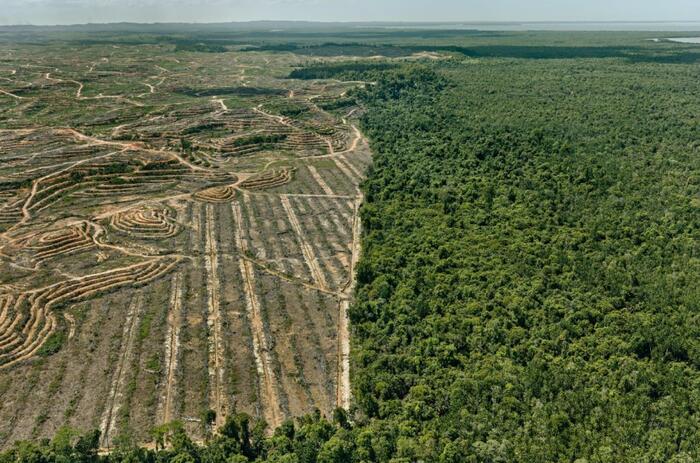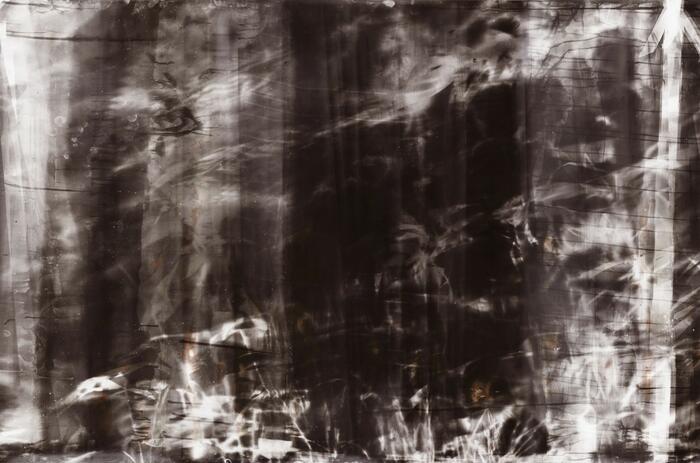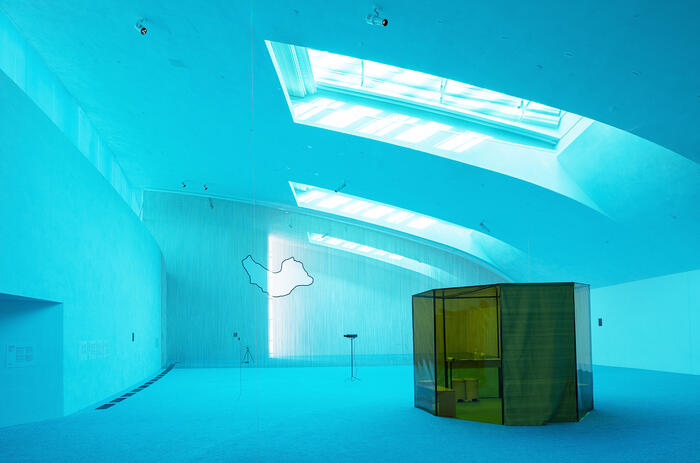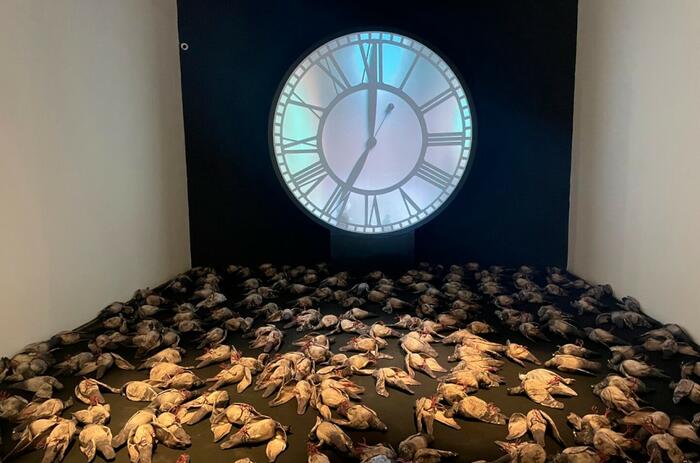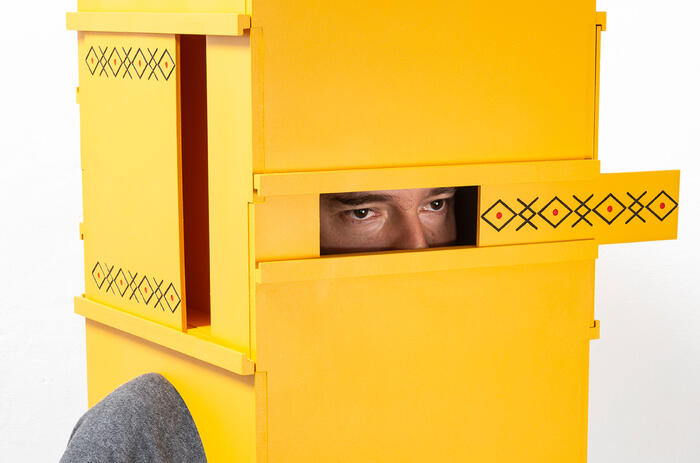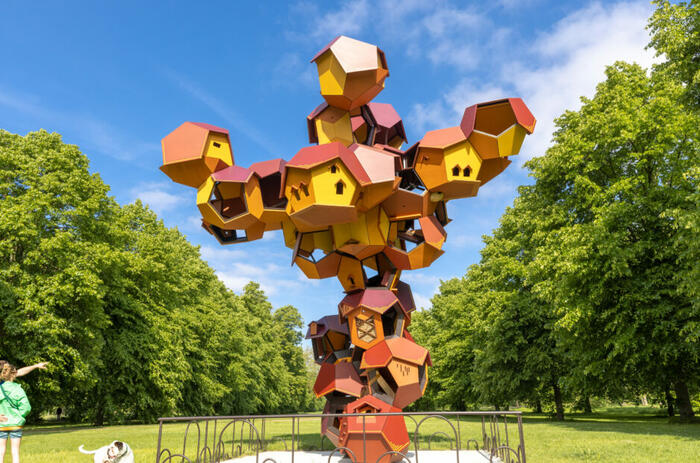A GEOMOPHOLOGICAL MAP OF THE RIVER SIL: THE EXHIBITION OF IRENE KOPELMAN
The exhibition Río Sil, lines and geometries by Irene Kopelman at the Fundación Cerezales Antonino y Cinia, approaches the landscape of the Sil river bank reiterating a model of observation that affects the relationship between art and natural sciences.
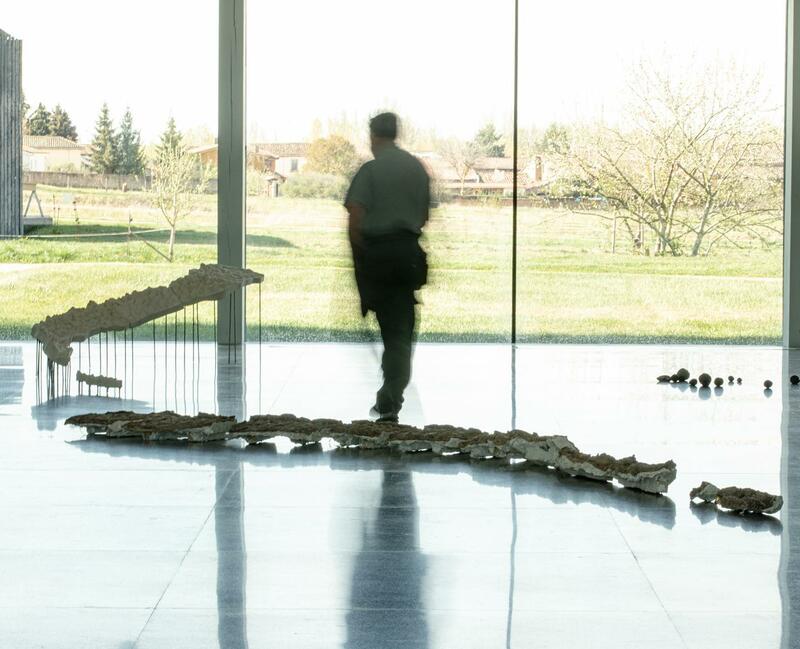
The artist reformulates the geomorphological description through the observation of diverse geological, lithological and anthropic characteristics that affect the ecosystem she is observing.
Curator Susana González explains: "The artist develops the pictorial series Schist Wall (2022) to contextualize the geological time of the project; in the series of drawings and paintings River lines (2022-2023) she makes a vertical record of the orography by collecting the changes in the water level of the slopes of the Cañon del Sil of the San Esteban reservoir. River Geometries (2022-2023) materializes the horizontal record of the water surface in a series of drawings and a ceramic installation, through sections that delimit the plane of the surface contained by the geological formations and three-dimensional blocks that represent sections of the volume of water. The project is completed with the series of drawings Clouds (2022) that allow to record the mists that form in the river valley conditioned by the evapotranspiration levels of the dams and reservoirs.
Kopelman shifts the position of analysis from analytical and empirical disciplines to interpretative ones, making a decipherment that places us before geological space as a fragmented continuum of lines, shapes, colors and liquid, solid or gaseous states. However, the interpretation of the Sil River not only operates in the dialectic of the visual, but also generates an interdependence between the images and other types of questioning derived from the physical and socioeconomic transformations arising from interventionist processes and their sustainability.
The exhibition approaches her practice through other projects selected for their thematic correlation (water-geology), such as Here and Elsewhere (2022), Cardinal Points (2018), On Yellows (2021-2022) and Indexing Water (2017). These works evidence the determining character of a natural and dynamic element such as water in the modeling of the landscape and its color, its capacity for change and its reconfiguring quality in relation to the physical environment (nature) and the political object (territory)".
Irene Kopelman was born in Córdoba, Argentina, in 1974. She studied at the School of Arts of the National University of Córdoba. In 2002/2003, she completed the International Residency Program at the Rijksakademie van Beeldende Kunsten in Amsterdam.
During the first years after her studies, she made different collaborations in the collections of museums such as the Geological Museum (Artis, Amsterdam); the Entomological Collection (University of Amsterdam - UvA); the Teylers Museum (Haarlem); the Natural History Museum in London and the Astronomical Observatory in Cordoba (Argentina). Later she became curious about the process of personally confronting the landscape through projects linked to lava fields, in the national park of Hawaii or the Antarctic landscape. This process led her to become interested in the processes that shape these landscapes, approaching to understand them through the analysis of scientific methodologies in many different institutions such as the Manu Learning Center, Madre de Dios, Peru; Sabah Parks in Malaysia, the Netherlands Center for Natural Biodiversity (NCB); the STRI (Smithsonian Tropical Research Institute) in Panama; the World Glacier Monitoring Service (WGMS) or the Swiss Federal Institute for Snow and Avalanche Research (SLF), among others.
Irene Kopelman's work is based on a long-term commitment to ecological issues and an interest in the parallels between the practices of science and art. Seeking points of convergence between the two fields is one of the focal points of her work. Ecological concerns are intertwined with his strong belief in drawing as a tool for understanding.

